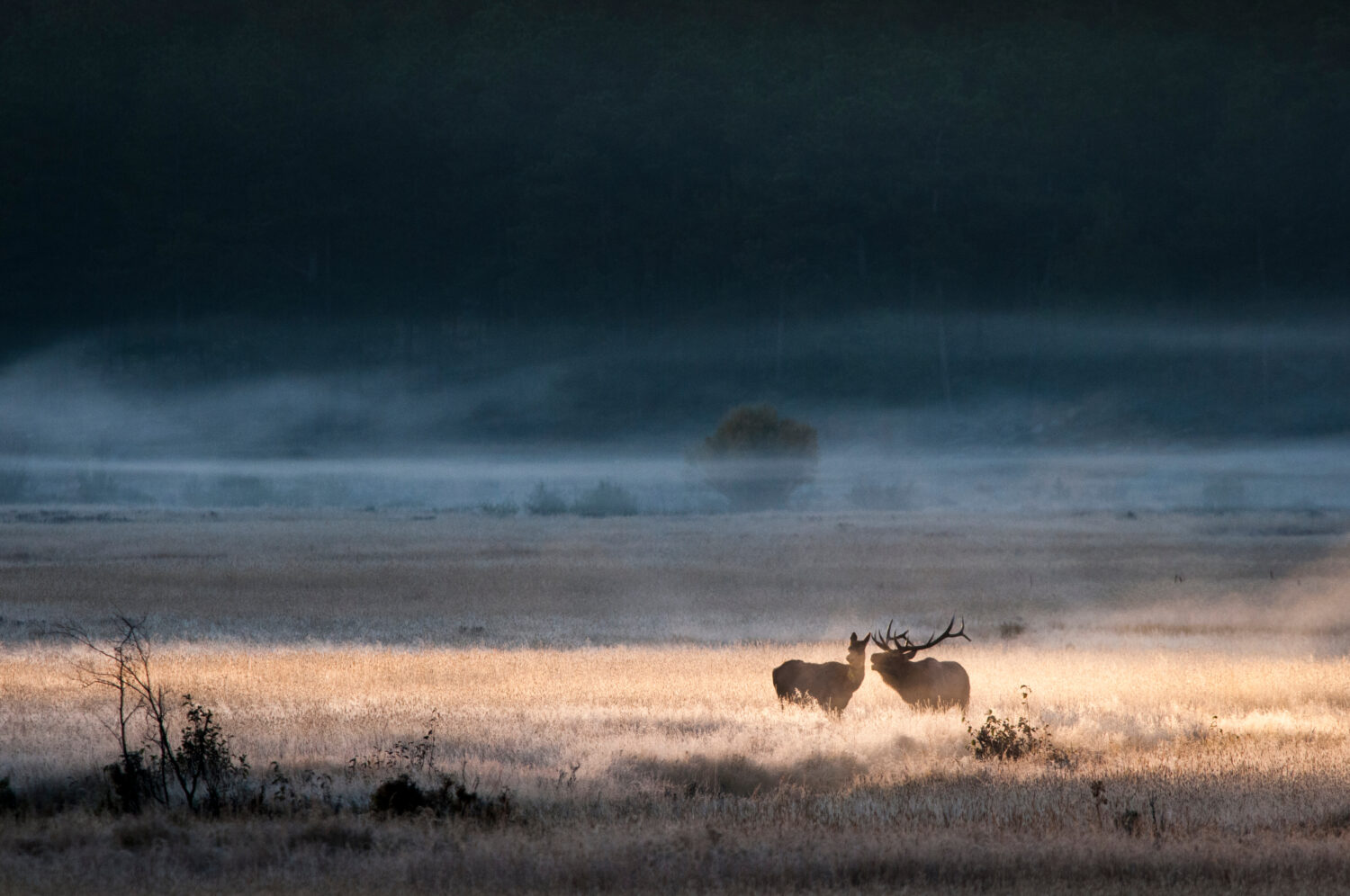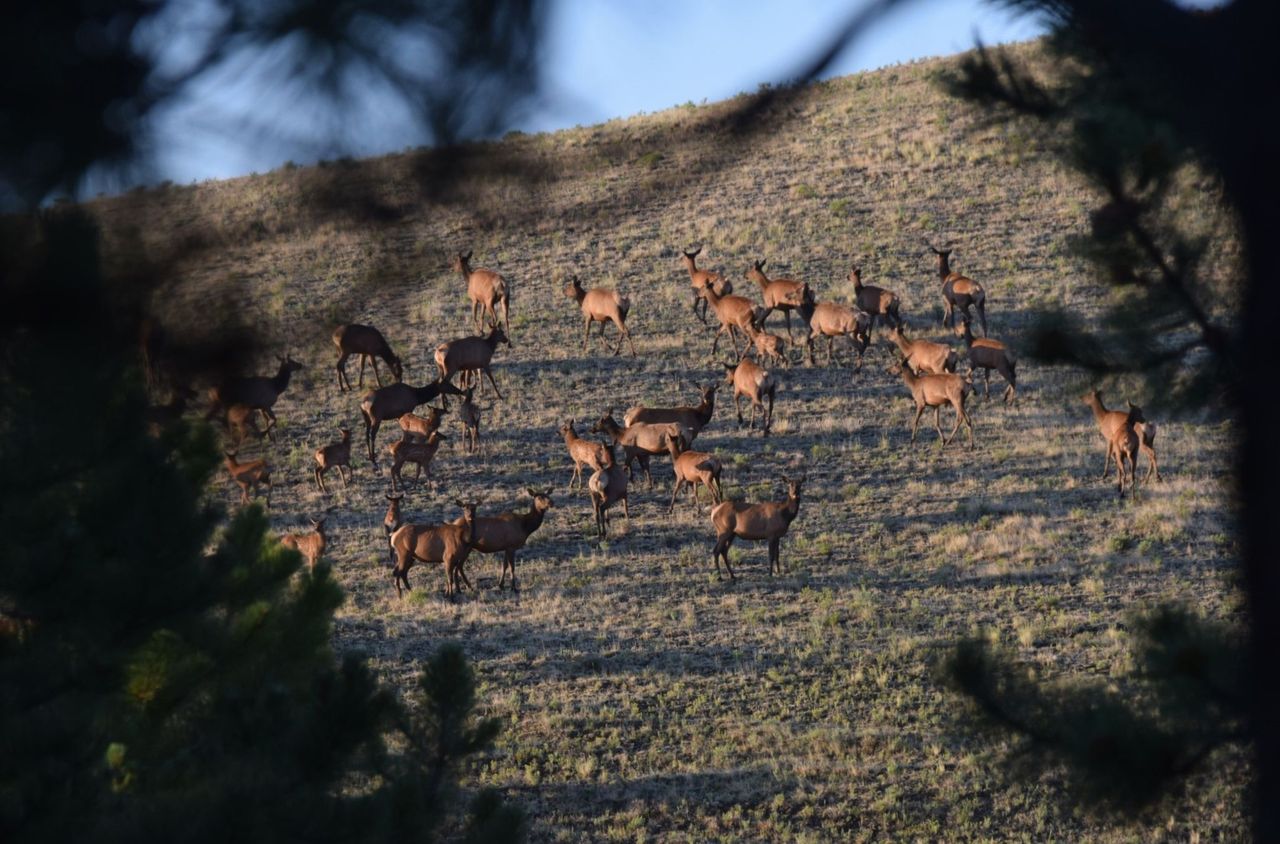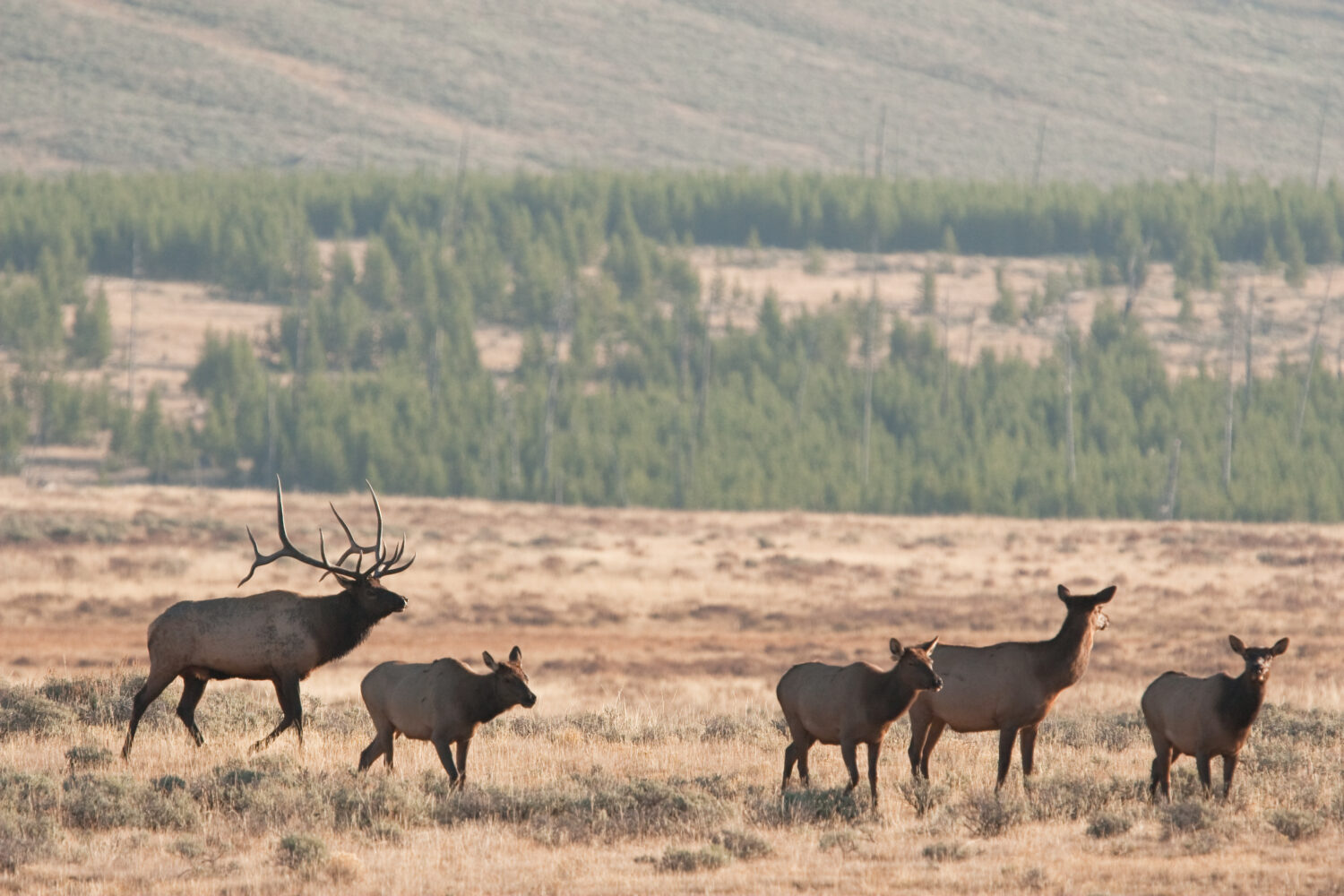Three Tips for Purchasing Your Next Elk Hunting Ranch

When big game enthusiasts consider purchasing a Western hunting property, Elk are often top of mind in the decision-making process. For first-time prospective buyers and experienced ranch owners alike, it can be daunting to weigh the numerous factors that ultimately influence the purchase of a legacy elk hunting ranch. As a specialized ranch brokerage operating in several famed elk hunting states, Confluence Land Company has years of experience assisting buyers in identifying, analyzing, and acquiring premier elk hunting ranches. Below, we’ve outlined three often-overlooked factors that contribute significantly to matching a hunter with their ideal property.
Match the Habitat to Your Hunt
Throughout the Fall, elk will favor different habitat types as their needs for nutrition, sanctuary, and companionship shift in priority. Understanding these changing needs will provide important information as you evaluate a particular hunting property purchase.
- Timbered Habitats: Heavily timbered acreage provides the shade, safety, and solitude required by rutting elk in earlier seasons. Barring extremely cold weather, elk will always seek timber for midday bedding. Timbered terrain also generally features a higher frequency of natural water sources that elk require in the hotter Fall months. Even on largely open ranches, small pockets of timber can provide the necessary sanctuary to maintain a resident population. Timbered and contoured terrain types are also often conducive to early season, primitive weapons tactics such as calling or still-hunting.
- Open Habitats: Open hillsides, meadows, and pastures exemplify “winter-range” habitat types which often enjoy dramatic increases in migratory Elk as the hunting seasons wear on. While Elk may still retreat to timber during midday during the later seasons, the existence of open terrain improves the ability to spot-and-stalk hunt effectively. Rifle hunting is ideal in open terrain, where hunters benefit from extended sight-lines and shooting opportunities.
Consider License Availability
Landowner hunting license allocations vary widely from State to State. State game agencies control not only the type and number of tags issued to each landowner, but also who is eligible to utilize the tags and whether tags can be sold to the hunting public. In general, you should consider how often you intend to hunt, who else will be invited to hunt with you, and what you’d like to do with any leftover additional tags. These factors will assist you in determining whether the elk hunting ranch you’re considering ranch will fit your specific needs. For a detailed breakdown of landowner licenses across the West, check out our previous Field Note, “Landowner Hunting Licenses Across the West.”

Dynamics with Neighboring Lands
In addition to analyzing the deeded acreage of prospective ranches, you should consider how neighboring owners utilize their properties. The degree of hunting pressure on nearby land, as well as land use practices, can significantly impact elk behavior. Though these dynamics should be evaluated on a case-by-case basis, a few common scenarios are illustrated below.
- Non-Hunted Private Lands: It can be both beneficial and challenging to have neighboring landowners who do not elk hunt on their property. The obvious benefit is that there may be less competition and disturbance of elk across the greater landscape. Lack of general hunting pressure often allows elk in the area to reach maturity, offering a better chance of trophy-quality animals. Conversely, once elk recognize the sanctuary offered by a non-hunted neighboring parcel, it can be difficult to coax them back onto a hunted property.
- Hunted Private Lands: Thoughtful hunting efforts by neighboring landowners can help keep elk moving between properties and increase opportunity on your ranch. As a landowner, it’s always wise to build strong relationships with neighbors; this is especially true when it comes to elk hunting. In some instances, landowners will work collaboratively to improve elk habitat and ensure that each owner’s hunting opportunities are maximized. Collaboration might include mutual hunting access agreements, discussions regarding selective harvest or limiting pressure, or insights on recently observed elk behavior. Overall, these conversations can foster relationships which benefit the elk hunting experience for everyone involved.
- Public Lands: Ranches bordering significant public lands offer unique benefits to landowners and are often viewed positively by the market. First and foremost, adjacent public lands afford landowners the ability to extend their hunt far beyond the deeded boundaries of their ranch. Significant hunting pressure on many public lands also encourages elk to seek refuge on surrounding private ground, encouraging more animals onto the property once hunting season begins. While adjacent public lands bring a variety of additional hunters to the landscape, thoughtful management practices by the landowner generally outweigh any disturbances to herd dynamics or behaviors.

Confluence Land Company is privileged to exclusively list the Rogers Mountain Ranch, which offers world-class elk hunting opportunities within two hours of Colorado’s Front Range. Rogers Mountain Ranch benefits from a healthy balance of timbered and open habitat types, which host elk throughout the year and have earned the ranch its nickname of the “Elk Hotel.” The ranch also shares a significant border with difficult to access public lands and receives numerous elk licenses through the Landowner Preference Program on an annual basis.
For additional insights on investment grade hunting properties in the Rocky Mountain West, please do not hesitate to Contact Us.

